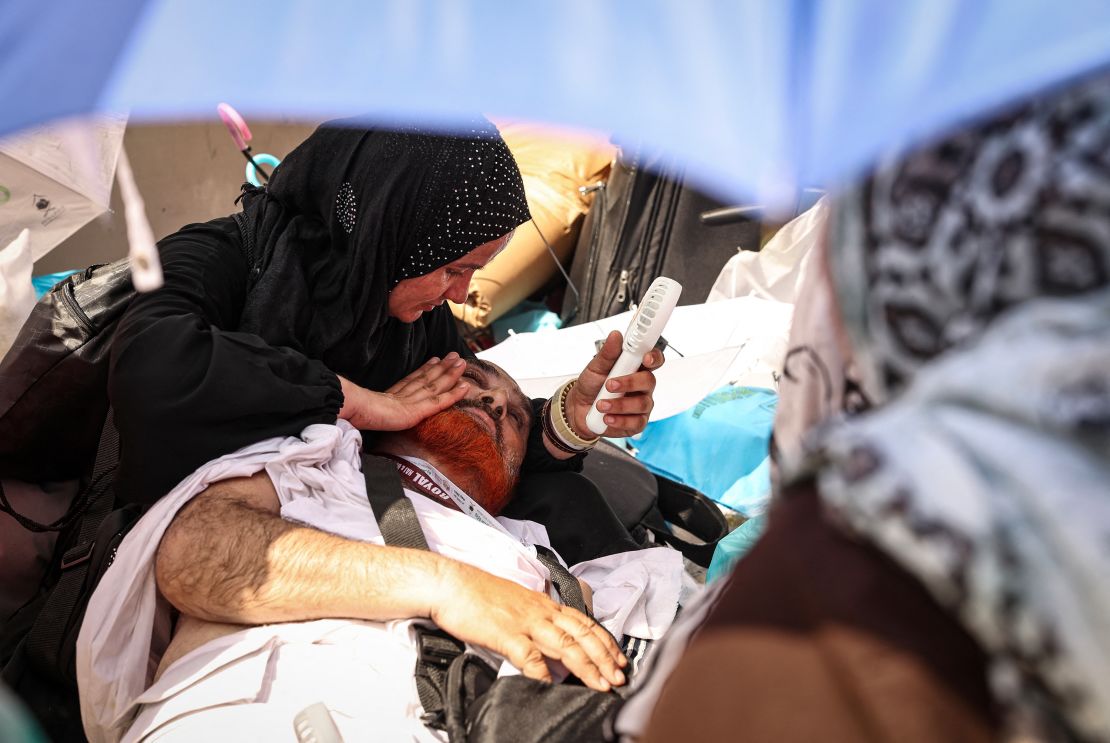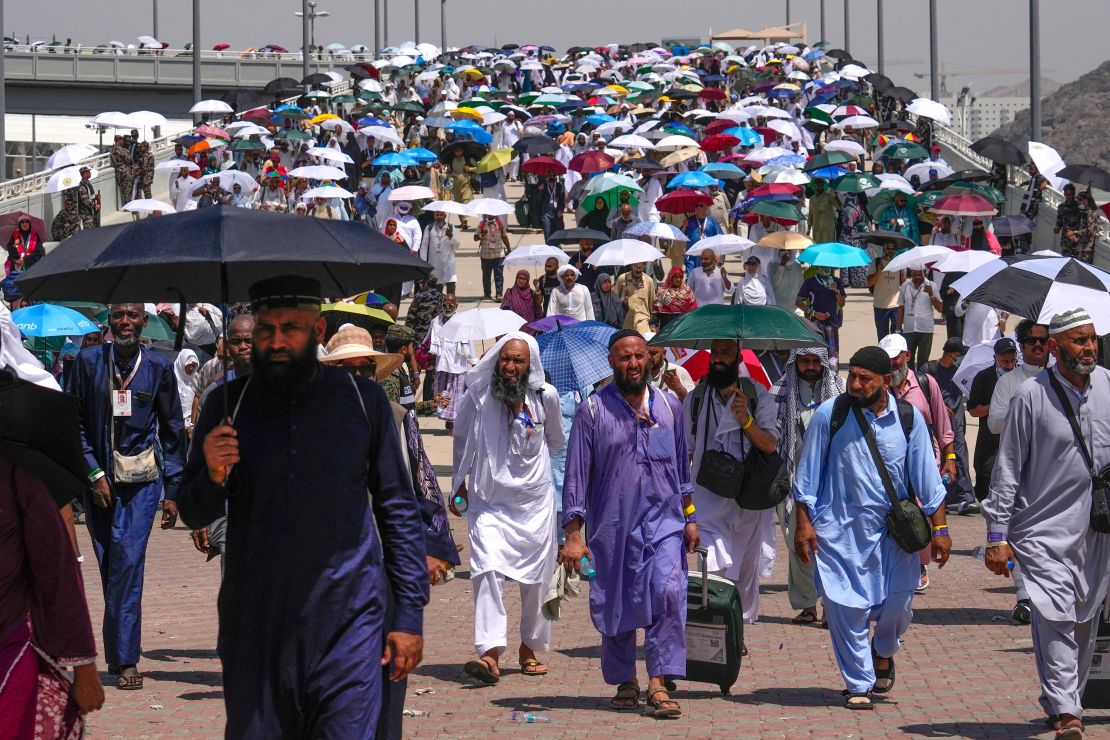CNN
—
Saudi Arabia did not have enough doctors or basic facilities to protect Hajj pilgrims from the effects of extreme heat last week, as the official death toll from this year’s Hajj climbed to nearly 500, two pilgrims who recently returned from the Hajj told CNN.
Witnesses said it has become common for worshipers to pass out and pass bodies covered in white cloths during the mass religious event.
This year’s Hajj to Mecca was held amid extreme weather conditions, with temperatures consistently above average figures. Since each country independently reports the deaths of its nationals, the exact death toll is unclear and is expected to rise further.
In addition, governments are only aware of pilgrims who have registered and traveled to Mecca as part of their country’s quota – and it is feared that more deaths may occur among unregistered pilgrims.
Zirar Ali, 40, who returned to London from the pilgrimage with his 70-year-old father on Friday, told CNN that authorities had not provided adequate water, shade or medical aid to the pilgrims in the week he had been there.
“To me, it felt like there were too many people, not enough doctors, so they were waiting for the worst cases to happen, and then they would go in,” Ali said, adding that the people who were going out came. would be a routine.
“I could not concentrate on my Hajj when I saw these people suffering,” he added.
Ali’s comments were echoed by another witness from Indonesia, 44-year-old Ahmad, who told CNN he saw many people getting sick and dying from the heat.

“On the way home, I saw many pilgrims die. About every few hundred meters a body was laid and covered with an ihrom [white fabric] Cloth,” he said.
“Every time water is distributed from locals or some groups, it is immediately flooded with pilgrims,” he said, adding that he did not see health workers or an ambulance on the road.
Both pilgrims lamented the poor infrastructure and organization of this year’s pilgrimage, especially for those who traveled independently outside licensed tour groups.
Each pilgrim in Saudi Arabia must obtain one of 1.8 million permits to enter Mecca legally. These licenses cost several thousand US dollars. Unlicensed pilgrims usually do not travel in organized tour buses with air conditioning or easy access to water and food supplies.

Although some have luxury facilities, all pilgrims spend most of their day walking outside in the sweltering heat.
According to Ali, five hours of walking each day was the minimum, but many pilgrims spent up to 12 hours a day outside.
According to him, while the long walk is a fundamental part of the Hajj experience, he believes the Saudi government should have provided more assistance.
“Taking eight hours from A to B is part of being patient and that is considered hardship… Be part of Hajj, we need to comfort and take care of ourselves,” he said.
The daughter of an elderly Indonesian man who died during the Hajj pilgrimage told CNN his family was “delighted” to be buried in the Islamic holy city of Mecca after years of waiting to make the pilgrimage.
Speaking to CNN on Sunday, Heru Jumartiyah said his 86-year-old father, Ngatijo Wongso Sentono, registered for Hajj in 2018 and traveled to Mecca with his 83-year-old wife and neighbors from Yogyakarta, Indonesia.
“My father was very keen on Hajj. He wanted out immediately,” he told CNN.
According to Islamic belief, dying and being buried in Mecca is considered a blessing, and many Muslims travel in their old age after saving up for the pilgrimage.
CNN has yet to hear back from contacting Saudi officials, who say they have not responded adequately to this year’s heat.
more than 1.8 million people participated in this year’s Hajj, one of the world’s largest religious gatherings, according to the Saudi General Authority for Statistics.
Deaths among pilgrims are not uncommon (there were more than 200 last year), and this year’s gathering is being held amid particularly high temperatures.
The Hajj season changes every year according to the Islamic calendar and this year fell in June, one of the hottest months in the kingdom.
It occurs two months and 10 days after Ramadan, during the Islamic month of Dhul-Hijjah. As the Islamic calendar is shorter than the lunar and Gregorian calendars, the Hajj time in the Gregorian calendar changes slightly every year.